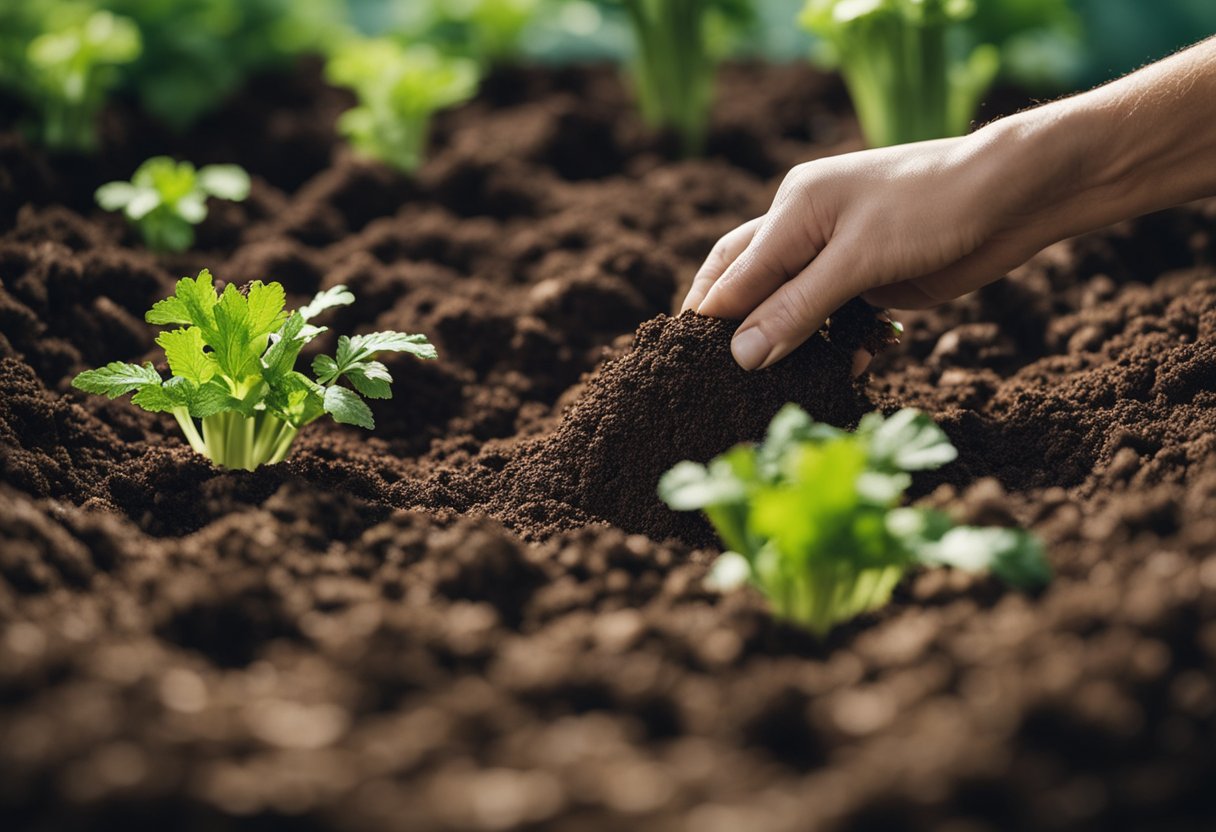As a gardener, it’s important to know when to plant different types of flowers to ensure they have the best chance of thriving. Zinnias are a popular choice for many gardeners due to their bright, colorful blooms and easy-to-grow nature. But When to Plant Zinnia Seeds?

Understanding zinnia seeds and their optimal planting times is key to success. Zinnia seeds are typically sown directly into the soil, rather than started indoors and transplanted later. They prefer warm soil temperatures and plenty of sunlight, so it’s best to wait until after the last frost date in your area before planting.
Preparing to plant zinnia seeds is a relatively simple process. Start by selecting a location that receives at least six hours of sunlight per day. Zinnias prefer well-draining soil, so amend your soil with compost or other organic matter if necessary. Once your soil is prepared, you can sow your zinnia seeds directly into the soil and cover them with a thin layer of soil. Keep the soil moist but not waterlogged, and you should start to see seedlings emerge within a week or two.
Key Takeaways
- Zinnia seeds are typically sown directly into the soil and prefer warm soil temperatures and plenty of sunlight.
- Wait until after the last frost date in your area before planting zinnia seeds.
- Prepare your soil by selecting a sunny location and amending with compost or other organic matter. Keep soil moist but not waterlogged and expect to see seedlings emerge within a week or two.
Understanding Zinnia Seeds
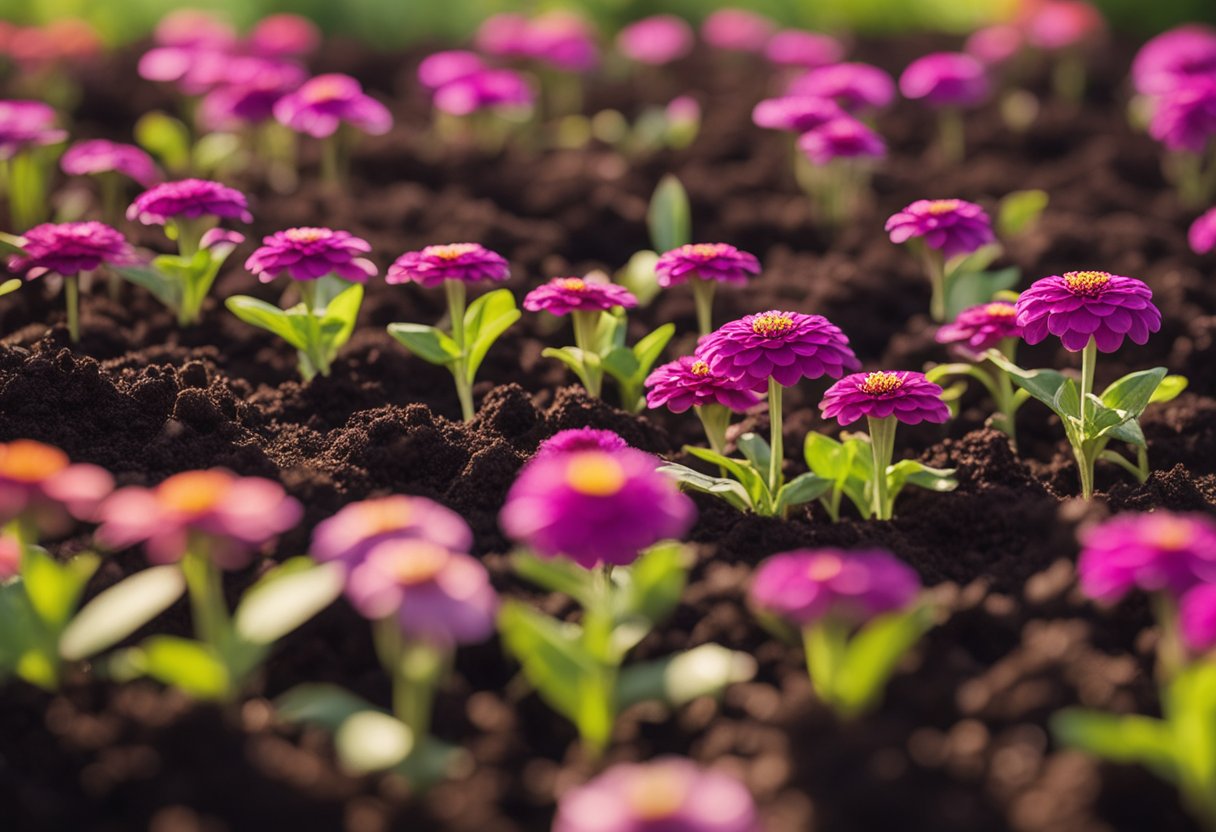
Types of Zinnia Seeds
Zinnia seeds come in various sizes and colors, and there are different varieties to choose from. Some of the common types of zinnia seeds include dwarf zinnias, tall zinnias, and medium-height zinnias. Dwarf zinnias grow up to 6 inches tall and are ideal for planting in containers. Tall zinnias can grow up to 3 feet tall and are perfect for garden borders. Medium-height zinnias grow up to 2 feet tall and are suitable for both containers and garden beds.
Zinnia seeds also come in different colors, such as pink, red, orange, yellow, and white. Some varieties have bi-colored petals or striped petals. The choice of zinnia seeds depends on personal preference and the intended use.
Best Conditions for Germination
Zinnia seeds need warm soil to germinate, so it’s best to plant them in the spring or early summer. The soil temperature should be at least 70°F for optimal germination. Zinnia seeds should be planted 1/4 inch deep in well-draining soil. The soil should be kept moist but not waterlogged.
Zinnia seeds take 7 to 10 days to germinate, and the seedlings should be thinned to 6 to 12 inches apart once they have grown to a height of 2 to 3 inches. Zinnias prefer full sun, but they can tolerate partial shade. They also require regular watering and fertilization to produce healthy and vibrant flowers.
In conclusion, understanding zinnia seeds is essential for successful planting and growth. By choosing the right type of zinnia seeds and providing optimal growing conditions, gardeners can enjoy a colorful and beautiful display of zinnias throughout the growing season.
Optimal Planting Times
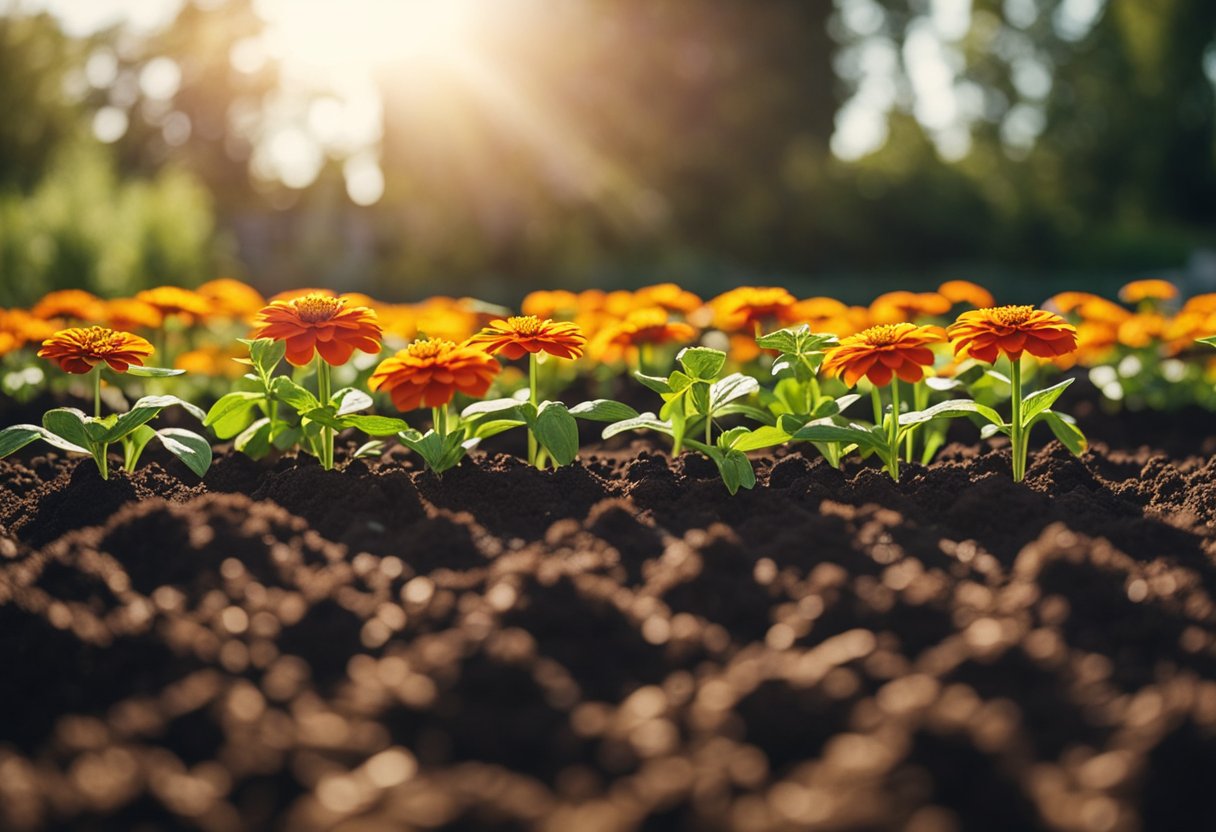
By Region
The optimal time to plant zinnia seeds can vary depending on the region you live in. In general, zinnias grow best in warm weather and require plenty of sunlight. If you live in a region with a shorter growing season, it’s best to start your zinnia seeds indoors 4-6 weeks before the last frost date. This will give your zinnias a head start and ensure that they have enough time to grow and bloom before the first frost.
If you live in a region with a longer growing season, you can plant your zinnia seeds directly in the ground after the last frost date. In warmer regions, zinnias can be planted as early as March or April. However, if you live in a region with hot summers, it’s best to wait until the temperatures have cooled down a bit before planting your zinnia seeds.
By Temperature
Zinnias prefer warm temperatures and will not germinate in cold soil. The optimal soil temperature for zinnia seeds is between 70-75°F (21-24°C). If the soil temperature is too low, your zinnia seeds may not germinate, or they may take longer to germinate.
To ensure that your zinnia seeds germinate properly, it’s important to wait until the soil has warmed up before planting. You can use a soil thermometer to check the temperature of the soil. If the soil temperature is below 70°F (21°C), you can warm up the soil by covering it with black plastic or using a cloche.
In summary, the optimal time to plant zinnia seeds depends on the region you live in and the temperature of the soil. By starting your zinnia seeds indoors or waiting until the soil has warmed up, you can ensure that your zinnias will grow and bloom beautifully.
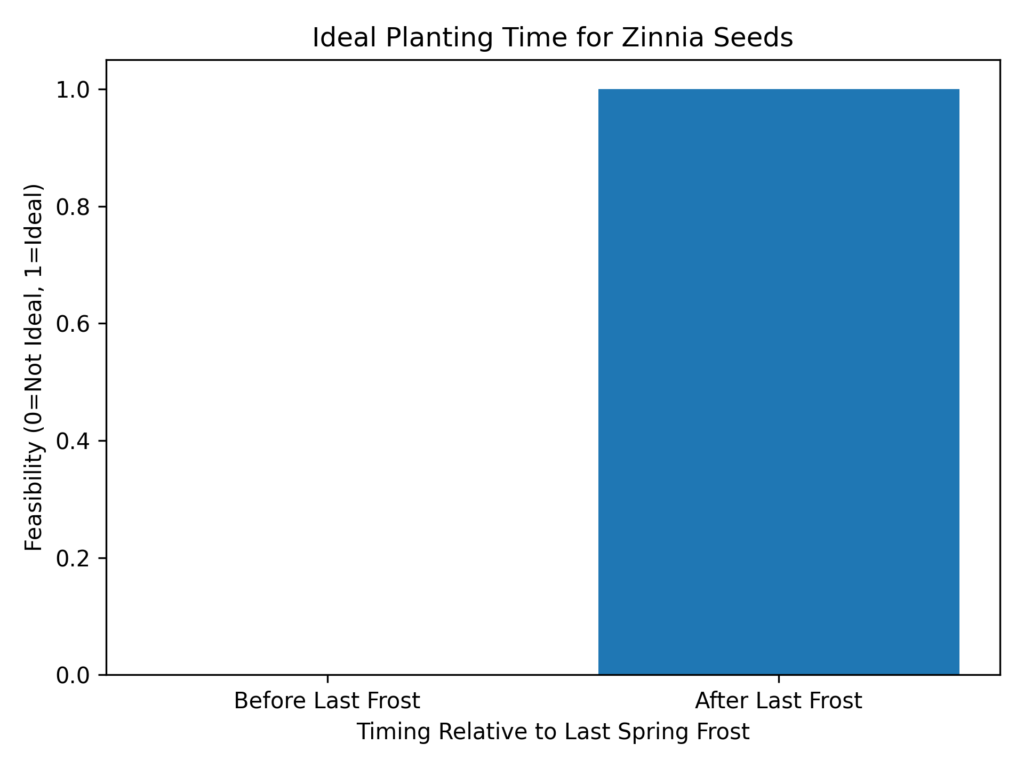
Preparing to Plant
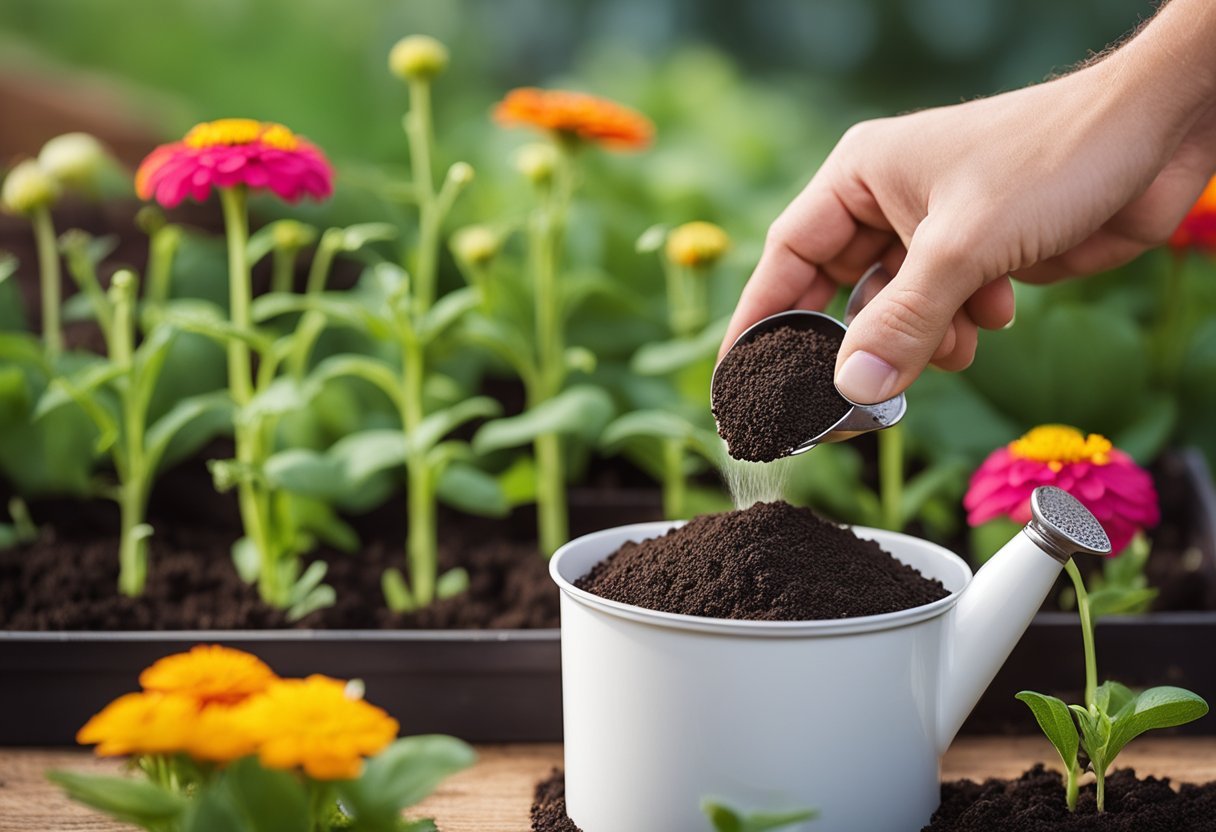
Soil Preparation
Before planting zinnia seeds, it is essential to prepare the soil properly. I recommend using a well-draining soil that is rich in organic matter. You can add compost or aged manure to improve soil quality. It is important to ensure that the soil is weed-free and loose enough to allow for proper drainage.
To prepare the soil, I suggest tilling the area to a depth of 6-8 inches. This will help break up any compacted soil and allow for better root growth. If you have heavy clay soil, you can add sand or perlite to improve drainage.
Seed Selection
Choosing the right zinnia seeds is crucial for a successful planting. I recommend selecting seeds that are suited for your climate and growing conditions. You can choose from a wide variety of zinnia seeds, including dwarf, tall, and medium-sized plants.
When selecting seeds, it is important to consider the color, size, and shape of the flowers you want to grow. You can also choose from single or double blooms, depending on your preference. Be sure to read the seed packet carefully to determine the best planting time and spacing requirements.
In summary, preparing the soil and selecting the right seeds are two critical steps in planting zinnia seeds. By following these steps, you can ensure that your zinnias grow healthy and vibrant.
Planting Process
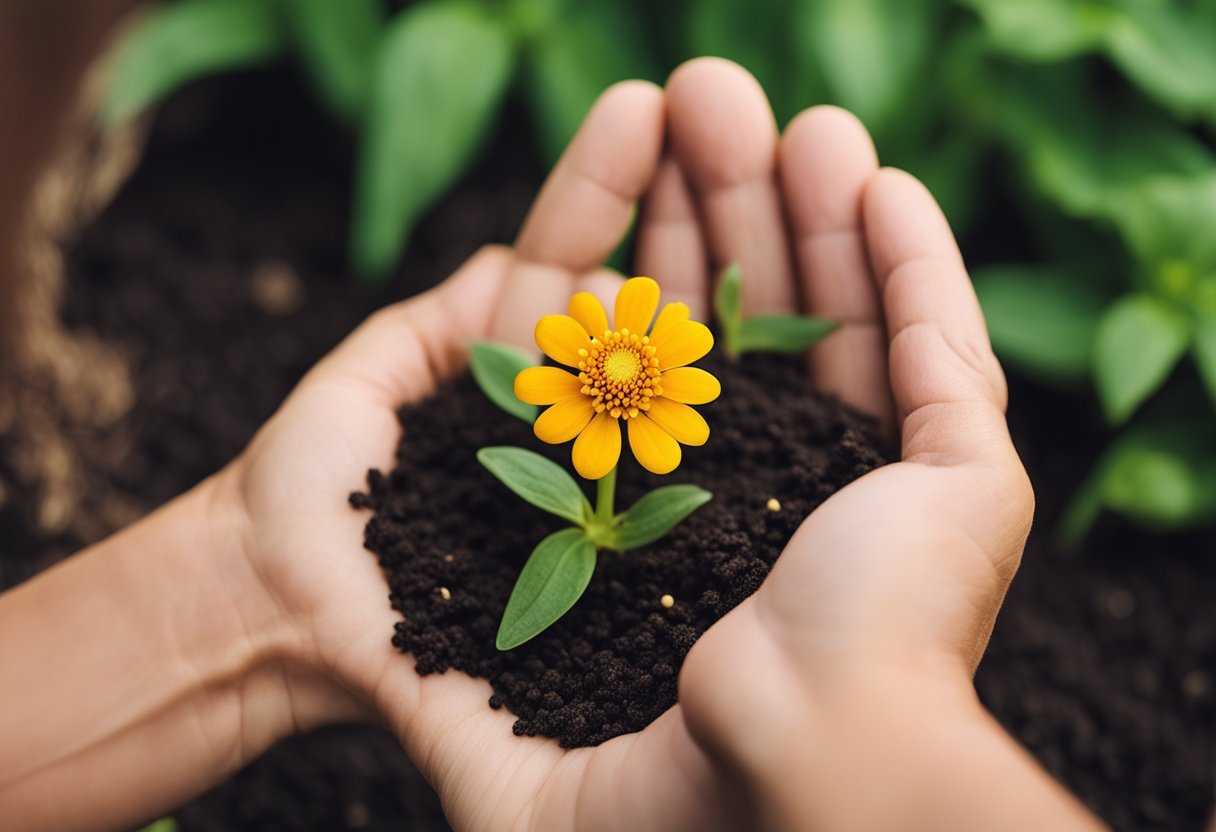
Sowing Techniques
When it comes to planting zinnia seeds, there are a few techniques you can use to ensure the best results. Firstly, it’s important to choose a location with well-draining soil and plenty of sunlight. Zinnias thrive in warm weather, so it’s best to sow the seeds after the last frost date in your area.
To sow the seeds, you can either scatter them directly onto the soil or start them indoors in seed trays. If you choose to scatter them, make sure to space them out evenly and cover them lightly with soil. If starting them indoors, fill seed trays with potting soil and plant the seeds about ¼ inch deep. Water them lightly and keep them in a warm, sunny location until they germinate.
Seedling Care
Once your zinnia seeds have germinated, it’s important to take good care of the seedlings. Keep the soil moist but not waterlogged, and make sure they are getting plenty of sunlight. If starting them indoors, gradually acclimate them to outdoor conditions by placing them outside for a few hours each day.
As the seedlings grow, thin them out so that each plant has plenty of space to grow. Zinnias can also benefit from regular fertilization throughout the growing season. You can use a balanced fertilizer every 4-6 weeks or use compost to enrich the soil.
By following these sowing techniques and seedling care tips, you can enjoy a beautiful display of zinnias in your garden.
Post-Planting Care
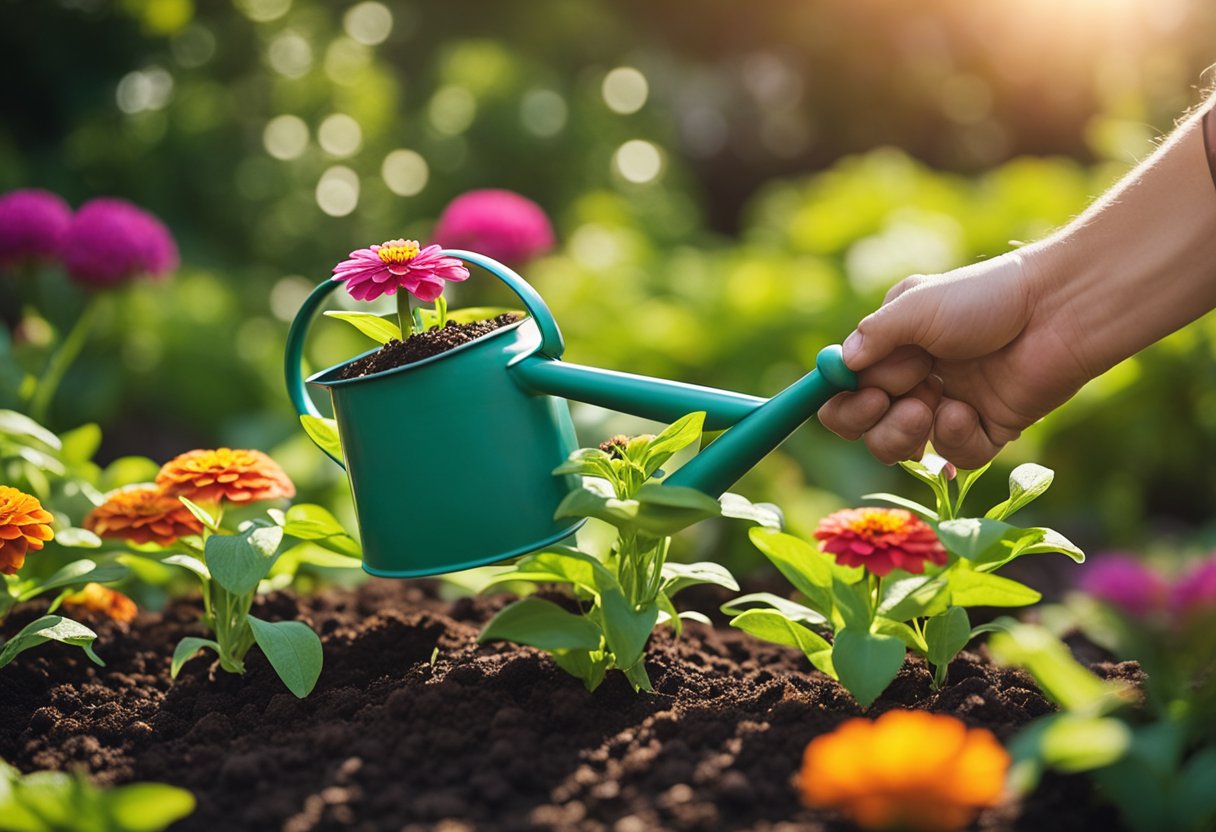
After planting zinnia seeds, it is important to provide proper care to ensure healthy growth and beautiful blooms. Here are some tips on post-planting care for zinnias.
Watering Requirements
Zinnias require regular watering to thrive. During the first few weeks after planting, it is important to keep the soil moist but not waterlogged. Once the plants are established, they can tolerate some drought, but it is still important to water them regularly.
I recommend watering zinnias deeply once a week, rather than shallowly more often. This will encourage the roots to grow deeper into the soil, which will help the plants to be more resilient during dry periods. Be sure to water at the base of the plants rather than from above, as wet foliage can lead to disease.
Fertilization Schedule
Zinnias are heavy feeders and require regular fertilization to produce abundant blooms. I recommend fertilizing zinnias every 2-3 weeks with a balanced fertilizer, such as a 10-10-10 or 20-20-20 formula.
Be sure to follow the instructions on the fertilizer package carefully, as over-fertilization can lead to excessive foliage growth at the expense of blooms. You can also use organic fertilizers, such as compost or fish emulsion, to provide nutrients to your zinnias.
By following these simple post-planting care tips, you can ensure that your zinnias will thrive and produce beautiful blooms all season long.
Also Read | How to Grow Broccoli in a Container: A Step-by-Step Guide
FAQs – When to Plant Zinnia Seeds

How late in the season can zinnia seeds be sown?
Zinnias are warm-season annuals, and they require warm soil to germinate and grow. You can sow zinnia seeds until around mid-summer, but keep in mind that the later you plant, the shorter the flowering period will be. It’s best to aim for planting zinnias in early summer to ensure a long blooming period.
What is the best month to plant zinnia seeds?
The best time to plant zinnia seeds is in late spring or early summer, after the last frost date has passed and the soil has warmed up. In most regions, this is around mid-May to early June. Planting at this time will give your zinnias plenty of time to grow and flower before the first frost in the fall.
Should zinnia seeds be planted indoors before transplanting?
Zinnia seeds can be started indoors in late winter or early spring, but they don’t transplant well. It’s best to sow zinnia seeds directly in the garden where they will grow. Zinnias are easy to grow from seed, and they germinate quickly in warm soil.
Can zinnia seeds be directly scattered into the garden?
Yes, zinnia seeds can be directly scattered into the garden. Choose a sunny spot with well-draining soil, and scatter the seeds thinly over the soil surface. Cover the seeds lightly with soil, water gently, and keep the soil moist until the seeds germinate.
Do zinnias reseed themselves for the following year?
Zinnias are annuals, which means they complete their life cycle in one growing season. However, zinnias are prolific seed producers, and they often drop seeds that will grow into new plants the following year. If you leave the spent flowers on the plant, they will form seed heads that can be collected and saved for planting the following year.
Is it beneficial to soak zinnia seeds prior to planting?
Soaking zinnia seeds in water for a few hours before planting can help speed up germination. However, zinnia seeds have a hard outer coat that can make soaking difficult. If you want to try soaking your zinnia seeds, place them in a bowl of warm water and let them soak for a few hours before planting.
